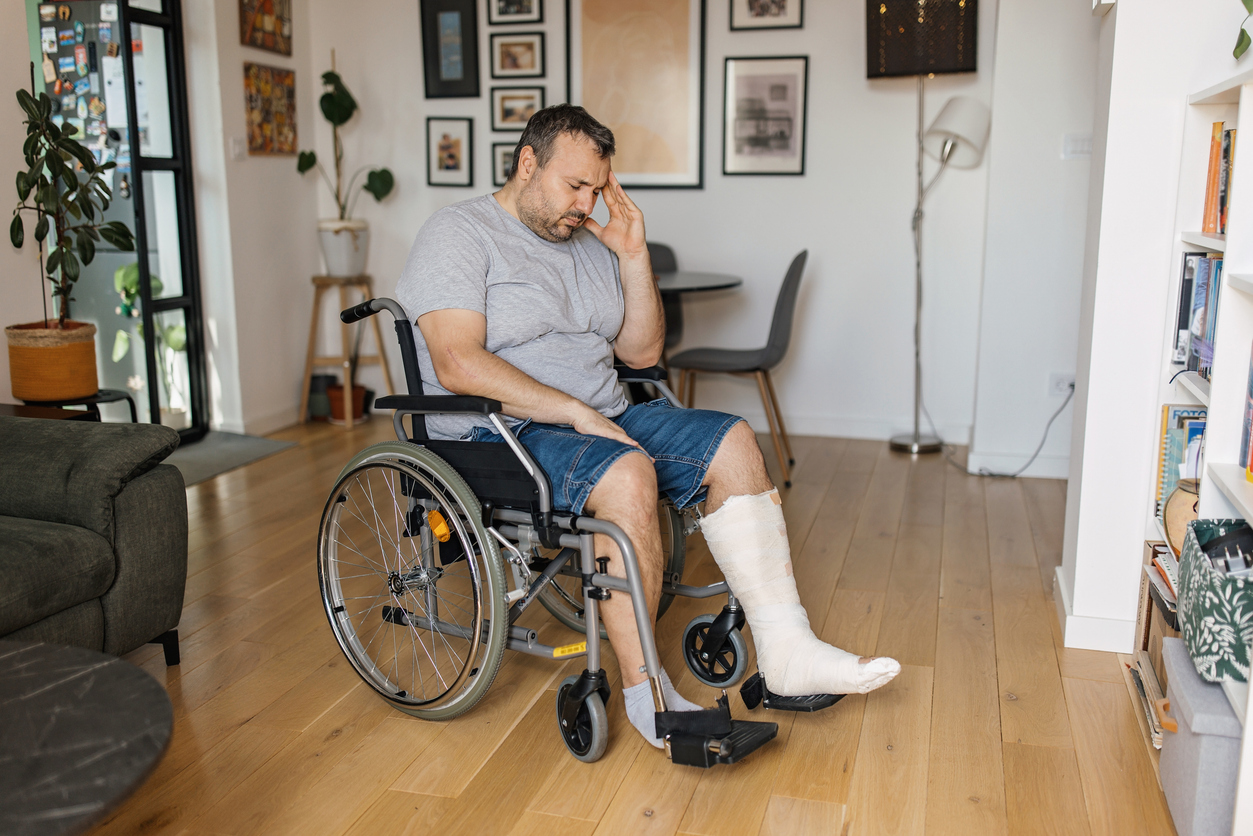Why Is It Important to Prove Emotional Distress?
Harm suffered by personal injury victims is often more than just physical. Victims may also suffer emotional distress, which can significantly impact well-being and quality of life. Injured parties should be compensated for the emotional as well as the physical harm they have sustained through someone else’s negligence or wrongdoing. Bodily injuries are more straightforward to document and prove in personal injury claims. Emotional distress is subjective, which makes it challenging to quantify and substantiate in a court of law.
How Is Emotional Distress Defined in a Legal Context?
As defined by Cornell Law School, Legal Information Institute (LII), emotional distress is mental suffering that occurs as an emotional response to an experience that arises from the effect or memory of a particular event (such as an accident or injury). Its symptoms may include depression, anxiety, inability to perform tasks, or even physical illness. In tort law, causes of action involving the infliction of emotional distress are classified into two categories:
- Negligent infliction of emotional distress: This occurs when a defendant’s negligence leads to a situation that causes emotional harm to the plaintiff. This applies even when the victim was not physically harmed but in the zone of danger where and at risk of suffering physical harm.
- Intentional infliction of emotional distress: In this case, the conduct of the defendant is so outrageous and extreme that it causes severe emotional trauma to the victim. To prevail in such a claim, you must prove the defendant acted intentionally or recklessly and beyond the bounds of decency. The emotional distress must be so severe that no reasonable person could be expected to endure it.
What Are the Challenges in Proving Emotional Distress?
Emotional trauma is subjective and, therefore, more difficult to prove. Unlike physical injuries, which can be documented through photographs and medical records, emotional distress must be demonstrated through changes in behavior, testimony from the injured party, testimony from witnesses, and medical diagnoses. Insurance companies and defense attorneys are often skeptical about claims of emotional distress. They may argue that the plaintiff is exaggerating the extent of emotional trauma or that it is unrelated to the actions of the defendant. Because of these hurdles, it is critical for the injured party’s attorney to employ strategic methods to prove emotional harm.
What Are Some Legal Strategies for Proving Emotional Distress?
Our seasoned Ohio personal injury attorneys are well-versed in legal strategies for proving emotional distress, including the following:
Testimony of the Plaintiff
A vital part of any emotional distress claim is detailed and specific testimony from the injured party. Plaintiffs must describe how the emotional trauma has affected their relationships, daily lives, and overall well-being. Depending on the unique circumstances of the case, this may include descriptions of impact in the following areas:
- Mood or behavior: Plaintiffs may explain how they have become more withdrawn, anxious, or depressed since the incident.
- Impact on relationships: Plaintiffs may discuss how emotional distress has strained their relationships with family, friends, or co-workers.
- Loss of enjoyment of life: When emotional trauma prevents an injured party from engaging in social activities or hobbies they enjoyed before the accident, it can be powerful evidence of the depth of suffering.
Diary or Journal Entries
A diary or journal documenting the plaintiff’s emotional state following an accident or injury can be valuable evidence in an emotional distress claim. In ongoing journal entries, plaintiffs can record their feelings of fear, depression, anxiety, or any other symptoms of emotional distress. This will serve as a real-time account of emotional trauma and demonstrate how emotional distress has evolved.
Physical Manifestations of Emotional Trauma
Emotional distress often causes physical symptoms, which may include insomnia, fatigue, headaches, and gastrointestinal issues. Plaintiffs can strengthen their claims by demonstrating that they have experienced physical manifestations of emotional distress. Medical records linking physical symptoms to emotional trauma can be compelling evidence.
Testimony from Individuals Who Know the Plaintiff Personally
Family, friends, and co-workers who know the injured party personally can provide powerful testimony as to how the plaintiff’s emotional state has changed since the accident. These lay witnesses can testify regarding behavioral changes, mood swings, or withdrawal from social activities they have observed in the plaintiff. These observations can give the court a complete picture of the injured party’s emotional distress.
Medical Documentation
Medical records that clearly connect the plaintiff’s emotional distress to the incident can help solidify the case and counter any assertion that the distress is unrelated. If the plaintiff has been diagnosed with a condition such as post-traumatic stress disorder (PTSD) or prescribed medications for an emotional condition following the accident, medical records of this can strengthen an emotional distress claim.
Medical Expert Testimony
Testimony from physicians or health professionals can play a role in proving emotional distress. An expert witness can provide the court with a clinical, objective perspective, which may be more persuasive than the plaintiff’s and lay witness testimony alone. A qualified medical professional can describe how the plaintiff’s mental state has been affected by the incident and explain the diagnosis and treatment of emotional distress.
What Role Does a Lawyer Play in an Emotional Distress Personal Injury Claim?
Proving emotional distress in an Ohio personal injury claim requires a strategic approach and careful planning. With the necessary evidence skillfully presented, emotional trauma can be treated as seriously as physical injuries in the eyes of the court. Our experienced personal injury attorneys at Watson Kuhlman, LLC can leverage every available legal strategy to help build a compelling case for emotional distress and aggressively pursue full compensation for your injuries. If you have suffered emotional trauma through someone else’s negligence or wrongdoing, contact us at 216-208-7858.


 Email Us Now
Email Us Now







